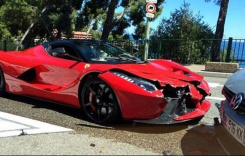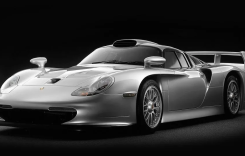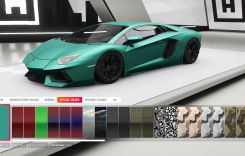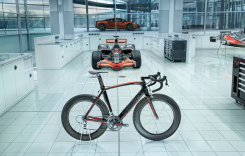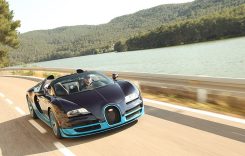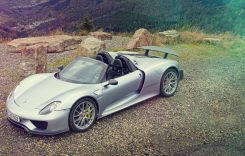Everyone with even a flicker of interest in motorcycles knows what MV represents:
Mike Hailwood and the “Fire Engine” Fours.
Giacomo Agostini – 15-time World Champion with his wailing, tenor Triples.
Massimo Tamburini and the F4.
Today’s MV it’s the F3, arguably the most beautiful production motorcycle in the world.
There’s MV and racing. Obviously.
MV and sportbikes. They’re synonymous.
MV Agusta and a touring bike? You must be joking!

So here’s the first challenge for the MV Agusta Turismo Veloce. Customers don’t buy MVs to go for a 1000-mile ride on a solid, dependable bike with anonymous looks. If you want an affordable workhorse, look for a nice, second-hand V-Strom 1000. The twin sister of MV’s sporting heritage is that the Varese built bikes are motorcycle art on wheels so much so, that this is MV’s tagline.
What does this mean in practice? When I first rode one of the very, very early 750 F4s in production, I almost crashed it. Too much throttle? Trail braking into a damp corner? No, quite simply because the [expletive deleted] thing trapped my hand underneath the handlebar while doing 5 mph in a parking lot and I came within a gnat’s eyelash of T-boning a large van.
I later mentioned this to Claudio Castiglioni, the legendary savior of MV, and he smiled: “Yes, Frank, of course you are right – but doesn’t the F4 look perfectly beautiful with the handlebars where they are?”
And, of course, the answer has to be in the affirmative.
However, having a touring bike which doesn’t work is a waste of metal – no matter how beautiful it is. While you can smile – well, as long as you don’t end up dead under the front wheels of a van – at the idiosyncrasies of a hyper sportbike, the tourer just has to do its job effortlessly and effectively. No ifs, buts or maybes. The thing has to work.

MV faced a third issue – or two twin sisters to be precise. If you want a thoroughly practical, go anywhere, do anything, stone-axe reliable Adventure-Tourer then you can own the utterly lovely Triumph Tiger 800 for around $12,000. Another $7000 on top of this will buy the testosterone laden BMW R1200GS in Premium Package trim, or you could save a couple grand from the GS and go down the touring route in sublime luxury with a Yamaha FJR1300. Finally, and the elephant really is in MV’s bathroom with this one, Yamaha will sell the thoroughly excellent, three-cylinder FJ-09 to you for a mere $10,490.
Now, wait for the roll of drums to fade away.
A Turismo Veloce is going to relieve you of a shade under $16,000 whilst the all-singing-all-dancing Lusso (deluxe in English) is just two dollars shy of $19K – and that’s an awfully big hit on your bank account.
For this sort of money, customers will want not only a supremely effective touring motorcycle but one which captures all the magic of MV – a bike you want to caress, last thing at night, before you go to bed – and then dream about in the restless, pre-dawn hours.
In every way, the heart of the Turismo Veloce (TV) is its engine. It’s a familiar powerplant, being found in the Stradale, Brutale and MV sportbikes, and it really is a peach of a thing. The latest version of the 798cc, three-cylinder motor remains radically oversquare with a 70mm bore, 54.3mm stroke and 12.2:1 compression ratio. There are also new pistons, a change of gearbox ratios and a hydraulic chain tensioner for the TV.

In the olden days a powerplant like this would have been a real screamer, fit only for the race track, but with the aid of MV’s MVICS (Motor and Vehicle Integrated Control System) 90% of the torque is available between 3500 and 10,500 rpm.
This hardly makes the Triple an electric scooter, but it is practical for a real world tourer. The maximum torque of 61.2 lb-ft arrives at 8000 rpm and the peak power of 110 horsepower coming 2000 revs later. As an aside, this is 15% more torque than the TV’s Brutale and Rivale stablemates.
Out on the road the results are impressive – almost to a ludicrous degree. As a test, I put the TV into sixth gear climbing a steep-ish hill and it pulled away from 30 mph as if it had a magnet in front. Now clearly no one would ever ride the bike like this normally but it does show how flexible the motor is.
Replicating real riding, the motor was happiest between 5000 and 9000 rpm. In this fat part of the power and torque band it was truly effortless – silky smooth with plenty of revs to spare both above and below the 4000 rpm range in which I used the engine. I rode up into the mountains behind Marbella with the TV in third and fourth gear – 50 mph to 75 mph – in the company of Brian Gillen, MV Agusta’s Technical Director, and later he described our ride as “brisk and yet effortless.” This is what the motor gives the rider – a sublimely relaxed and yet deeply involving ride.
Normally, I am not a fan of high-tech electronics, with 58 zillion options, but in the case of the TV they do start to make some sort of practical sense. The five main parameters are throttle sensitivity, torque, engine braking, engine response and rev limiter. Ridden all day, in what could be varying conditions, there is an argument for being able to dial up a gentler bike in the dew damp dawn and a sparkier one in the dry, warm midday.
It is also possible to design your own maps and have these saved as custom settings.

For example, as a motorcycle racer I hate any throttle delay. When I move the throttle drum I want instant response. So, on a snotty, leaf-strewn autumn day I could reduce the TV’s power and torque but still have immediate throttle response to everything which I had allowed the engine to provide. Truly, smart engineering.
Against this is my Darwinian view of riding which says that if you can’t feel what the bike is doing, and don’t understand that the throttle works both ways, then you really should be riding a Chinese 125 with sissy bars and tassels hanging from the end of the handlebars – but I have been riding for 5000 years now, so I am hardly a rich, young 30-something – which is MV’s key market.
Interestingly, for me at least, the Sport option is not the one I would choose if I owned a TV. In this mode, there is too much harshness in the power delivery to be fun – and I don’t know if it is much, if any, quicker than the Touring program. There is still a quick, intimate relation with the throttle response in Touring mode but there is also a creamy, electric motor smoothness which really does inculcate a King of the Road sense. Bow before me, ye lesser mortals because I am riding an MV Turismo Veloce and therefore I am truly your superior. Or something along those lines…
One part of the electronics’ package I really do love is the quickshifter.
I have said that I am hardly first in the line for rider aids but MV’s quickshifter and autoblipper really is a thing of wonder. It is impossible to make the system not work – no matter how deliberately cackhanded or abusive the gear changes. There is, however, one way to make the system fail and that’s by not switching it on. There is such a vast amount of information on the dashboard that my quill-and-ink, medieval brain just didn’t find the right option for the auto-shift. This allows me to report with confidence that the gearbox works just fine with the traditional clutch, which is feather-light and effortless to use.
Naturally, there are eight levels of traction control – who wouldn’t need eight levels of traction control to go for a ride on a Sunday? Thankfully, the system can be switched off altogether if you wish.
Disregarding the fact that I am still coming to terms with such newfangled ideas as flushing toilets and electric lights, the colored dash is incredibly packed with information, even if it were being read by a 10-year-old PlayStation master. The smart move would be to have the equivalent of a computer’s visual desktop, displaying all the options available – and there are an immense amount – and then a choice of screens so that the rider could choose the most appropriate one.

Personally, I would like a simple screen with speed, rpm and miles to empty, displayed clearly – followed by the various riding modes, astrological predictions based on the rider’s zodiac sign, what you want for dinner and all the other myriad choices the TV offers to you on separate screens. If you get bored with the dash, there are also two 12-volt power sockets and two five-volt USB sockets so that, presumably, you can answer your e-mails while playing games, booking movie tickets and all the other activities which are far more important than riding your motorcycle.
If you are buying a Turismo Veloce just because of the electronics then $19,000 is too much to pay. But stand back from the TV and you can see precisely why MV’s stylist, Adrian Morton, is worth every penny of his salary. Quite simply, the motorcycle is beautiful – from every angle and in every way. And here’s the really clever thing, it is also a credible touring motorcycle.
The key thing is that the panniers are now of a sensible, 30-liter size.
I went ballistic when I rode the MV Stradale because the panniers were too small to take a full-face helmet, but now they are the correct capacity. The first thing everyone does when they stop for a tourist walk or lunch break – especially if they have a pillion – is put their helmet away so they are not carrying an awkward lump around. My wife, Carol, has a very clear system. Purse in pannier until we stop. Dismount; release purse; put helmet and gloves in pannier; walk around in comfort. Q.E.D.
Not only are the Veloce’s panniers of a sensible size but they are very clever too. The Turismo is a svelte beast being over three inches narrower than a Multistrada. But here’s the thoughtful thing – the panniers are actually narrower than the handlebar width. So wherever you can thread the bike rest assured the panniers will fit too – an absolutely essential benefit for close combat, urban riding. A further essential touring feature are the pannier leg cutaways, because your pillion will rarely ride without the panniers extant. And experienced two-up riders know that you’ll never make it past the end of your road, let alone to the boutique restaurant in the mountains, if your pillion can’t sit comfortably.
And the Veloce is extremely comfortable.

The hard, rectum-assaulting lump in the middle of the Stradale’s saddle has been replaced by a much softer piece of foam. There was lot of room to wriggle about and yet still feel supported for my 5’ 10” height. I am confident that Carol would be comfortable and happy on the back too, because there is a decent seating area instead of the chocolate box sized pieces of thin foam found on regular sportbikes.
The adjustable screen gives plenty of protection and the ergonomics of the bike are excellent. Only the front brake lever is odd. For some reason, it can’t be adjusted to suit the hand size of smaller riders, or those like me who want the lever really near to the ‘bars for control reasons.
The bike oozes lovely touches, and the fit and finish is impeccable.
Ironically, this is why Adrian and MV have got to raise their game with the stainless silencer/catalytic converter. With any other manufacturer a big lump of brown colored stainless steel visible beneath the bike would be fine, but not on an $18,000 machine. In this price bracket, the styling – the motorcycle art – needs to penetrate every pore of the motorcycle.
So, let’s stand back and consider the Turismo Veloce with a bit more thought than might normally be necessary. The reason for the thinking time is that the TV is truly the first of its kind – a genuine hyper sport-tourer. I rode the TV in the company of a group of journalists who were really pressing on, evaluating the new MV Brutale – a true street racer. Even with this group, the Turismo Veloce was able to comfortably keep up without struggling for power. Okay, it can be fast: tick that box.
The TV is a true sportbike in terms of handling, brakes and performance. At 439 pounds, the Turismo is light and with a 56-inch wheelbase it’s nimble too. The handling is completely neutral and undemanding, yet involving. If you want to know precisely what the bike is doing, the information is there through the wheels and, with two big, 320mm discs carrying radial-calipers, the TV stops like a sportbike too. Equally, if you prefer to look at the views, then the TV isn’t going to bite you in the bum for not paying attention.
Can I imagine riding 300 miles in a day?
Yes, front brake adjustment apart, the bike is incredibly rider friendly and a pleasant place to be. With a 5.28 gallon tank, it has proper touring range and the luggage means that it is the first MV where you could realistically spend a week away from home.
What the bike is missing, and it really is annoying, is a centerstand and heated grips. These are on the $4000 more expensive Lusso model, but they are such basic items on any current touring machine that they should be an automatic fitment.
And now to the question you should never ask a journalist – would I buy a Turismo Veloce with my own money? The answer is yes. In fact, rarely have I been so impressed with a motorcycle because you get almost a garage full of bikes wrapped up in one. It is a real sportbike and, with the right rider, would run in the middle group at any track day. Equally, the TV can be a relaxed, dignified tourer which Carol would enjoy riding with me.
Finally, it is pure MV in a way I never thought the bike could be and that, more than anything else, is perhaps the cleverest thing that the good folk at Varese have done with this bike.
2015 MV Agusta Turismo Veloce 800 Specs:

Engine: Liquid-cooled 798cc Triple
Bore x Stroke: 79 x 54.3mm
Compression Ratio: 12.2:1
Clutch: Wet, mutli-disc hydraulic
Transmission: Cassette style, six-speed constant mesh
Frame: ALS steel tubular trellis
Front Suspension: 43mm Sachs semi-active hydraulic fork with MVCSC (Marzocchi manually adjustable fork on Standard model)
Rear Suspension: Sachs semi-active single shock, hydraulic spring preload adjustment and MVCSC (Sachs manually adjustable shock on Standard model)
Front Brake: Dual 320mm discs, four-piston radial-mount Brembo calipers
Rear Brake: 220mm disc, two-piston Brembo caliper
ABS: Bosch 9 Plus with RLM
Front Wheels: Aluminum alloy, 3.5 x 17
Rear Wheels: Aluminum alloy 5.5 x 17
Front Tires: 120/70 ZR17
Rear Tires: 190/55 ZR17
Wheelbase: 56.1 inches
Seat Height: 33.46 inches
Dry Weight: 439 pounds (421.1 pounds on Standard model)
Fuel Capacity: 5.28 gallons

